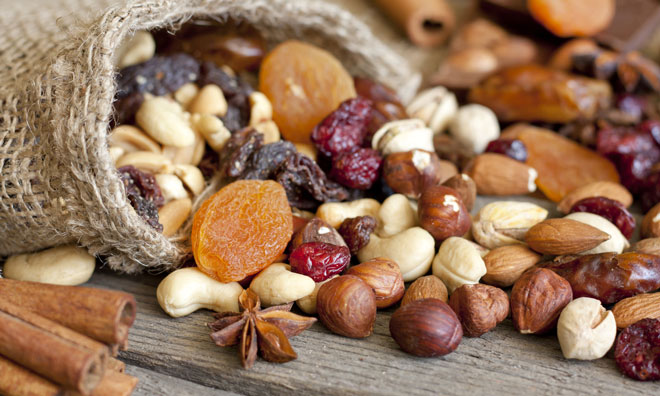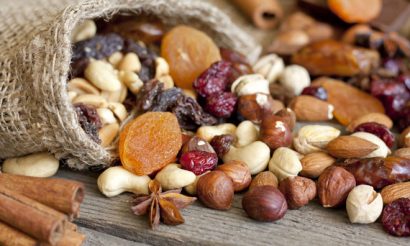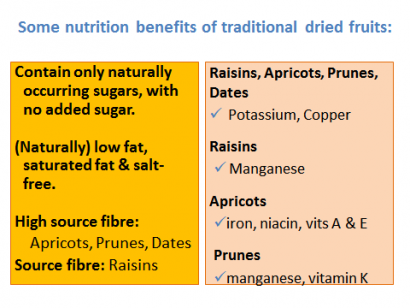Dried fruit: dispelling the sugar myth
- Like
- Digg
- Del
- Tumblr
- VKontakte
- Buffer
- Love This
- Odnoklassniki
- Meneame
- Blogger
- Amazon
- Yahoo Mail
- Gmail
- AOL
- Newsvine
- HackerNews
- Evernote
- MySpace
- Mail.ru
- Viadeo
- Line
- Comments
- Yummly
- SMS
- Viber
- Telegram
- Subscribe
- Skype
- Facebook Messenger
- Kakao
- LiveJournal
- Yammer
- Edgar
- Fintel
- Mix
- Instapaper
- Copy Link
Posted: 16 August 2016 | Jennette Higgs, Consultant Dietitian, California Prune Board | 2 comments
Jennette Higgs, International Dietitian and Consultant discusses and dispels the false myth of dried fruit as a sugar-filled dentist’s nightmare…


Jennette Higgs, International Dietitian and Consultant discusses and dispels the false myth of dried fruit as a sugar-filled dentist’s nightmare…


Right or wrong, excess sugar intake is widely frowned upon by health experts, due to the association of high ‘free’ sugars with poor dietary quality, obesity and increased risk of non-communicable diseases – heart disease, cancers, diabetes, asthma and dental diseases being the most prevalent globally. As defined by the World Health Organisation (WHO), free sugars include monosaccharides and disaccharides added to foods and beverages by the manufacturer, cook or consumer, as well as the sugars naturally present in honey, syrups, fruit juices and fruit juice concentrates.
So it might be safe to assume that traditional dried fruits should be excluded from current public health campaigns, designed to meet WHO recommendations for reducing sugar to less than 10% of daily energy intakes… or should they?
Emphasis remains on reducing the consumption of sugar-sweetened beverages and the sugar contributed by fruit juices and smoothies because of the large volumes of these energy-rich drinks that people consume everyday. Further to reducing sugars, the protective role of dietary fibre for reducing risks to health is well recognised. In fact the UK’s Scientific Advisory Committee on Nutrition recommends reducing sugars to less than 5% energy as well as increasing the recommended fibre intake from 25g to 30g per day. For the majority of consumers this will be difficult to achieve and for this reason, traditional dried fruits could be promoted as playing a useful role in the maintenance of a healthy diet, providing varying amounts of dietary fibre in a natural, sweet tasting format.
So logically speaking dried fruit should currently be recommended by health professionals as part of the solution – right?
It seems not, for a number of reasons:
Firstly, the popularity of processed fruit snacks, with varying quantities of fruit pieces, fruit juice concentrate and other forms of added sugar (e.g. glucose syrup in yoghurt coatings), is unfortunately blurring the boundaries between confectionery at one extreme (almost 100% sugar) and traditional dried fruits (that have no added sugar) at the other. Processed fruit snacks have been promoted as healthy, some boasting that they contribute to one of the 5-a-day, convenient for children’s lunchboxes. But consumers are now questioning this perception. The Action on Sugar survey, 2015 of children’s healthy fruit snacks revealed that 85% contained more sugar than Haribo (more than 4tsp sugar per serving). Such reports have since spurned the industry to take a good hard look at the role of fruit and sugar for healthy convenience. It seems however that there is a long way to go as consumers and health professionals alike appear to remain unable to automatically distinguish between fruits with added sugar and those that are 100% pure fruit.
“A 30g portion of dried fruit, such as currants, dates, sultanas and figs, counts as one of your 5-a-day…”
Secondly, dried fruits are included on lists of foods to limit to mealtimes due to their potential detrimental effect on teeth. Indicative of this issue, the UK’s NHS website includes the following statement :
“A 30g portion of dried fruit, such as currants, dates, sultanas and figs, counts as one of your 5-a-day, but should be eaten at mealtimes, not as a between-meal snack, to reduce the impact on teeth.”
The California Prune Board have taken this matter seriously and commissioned a review of research literature to find the source of the negative advice given with respect to the avoidance of dried fruit. Oral health is a complex issue, and preliminary findings highlight a lack of consistent data such that more research is required to ensure evidence-based practice. Old research remains centred around dried fruit sticking to the teeth, but improved research methods start to challenge these assumptions. Prunes can provide some potential benefits for dental health, such as the encouragement of salivary flow through chewing; anti-microbial properties due to their high polyphenol content; the cleansing action from fibre; and a low fermentability due to prunes high sorbitol and low sucrose content as discussed further in an earlier article on the New Food magazine website.


Traditional dried fruit is simply fresh fruit with water removed; a convenient and healthy alternative. Unfortunately even experts are unclear as to the relative sugar content of dried fruit, so at best they may be viewed as a mildly healthier alternative to confectionery. It’s been a natural move to adopt dental health advice and recommend limiting consumption of dried fruit to mealtimes and this advice naturally undermines its potential role as a healthy alternative to currently consumed snacks that can be high in sugar, fat and salt.
None of these findings are new to the dried fruit industry. Indeed, a report was published in 2011 by the International Nut and Dried Fruit Council (INC) that summarises the view of a group of scientists that argue that traditional dried fruits could and should be considered alongside fresh fruit in terms of their nutritional potential and thus contribute towards achieving an increased fruit and vegetable intake, necessary for improved health outcomes.
As an industry we need to do more to disentangle traditional dried fruit from processed fruit products; correct misinformation with accurate communication and high quality research; and reposition traditional dried fruit as a healthy snack choice.
Jennette Higgs, Consultant Dietitian, California Prune Board









Thanks for sharing some of the valuable information with us. I absolutely loved the content about Dried fruit sugar myth.
The sugars found in dried fruit are mostly fructose and dextrose, the same sugars that are naturally found in the fresh fruit. However, some dried fruits, like cranberries, are too tart for most people to want to eat them as a snack, so sugar or fruit juices are added to them when they’re dried.